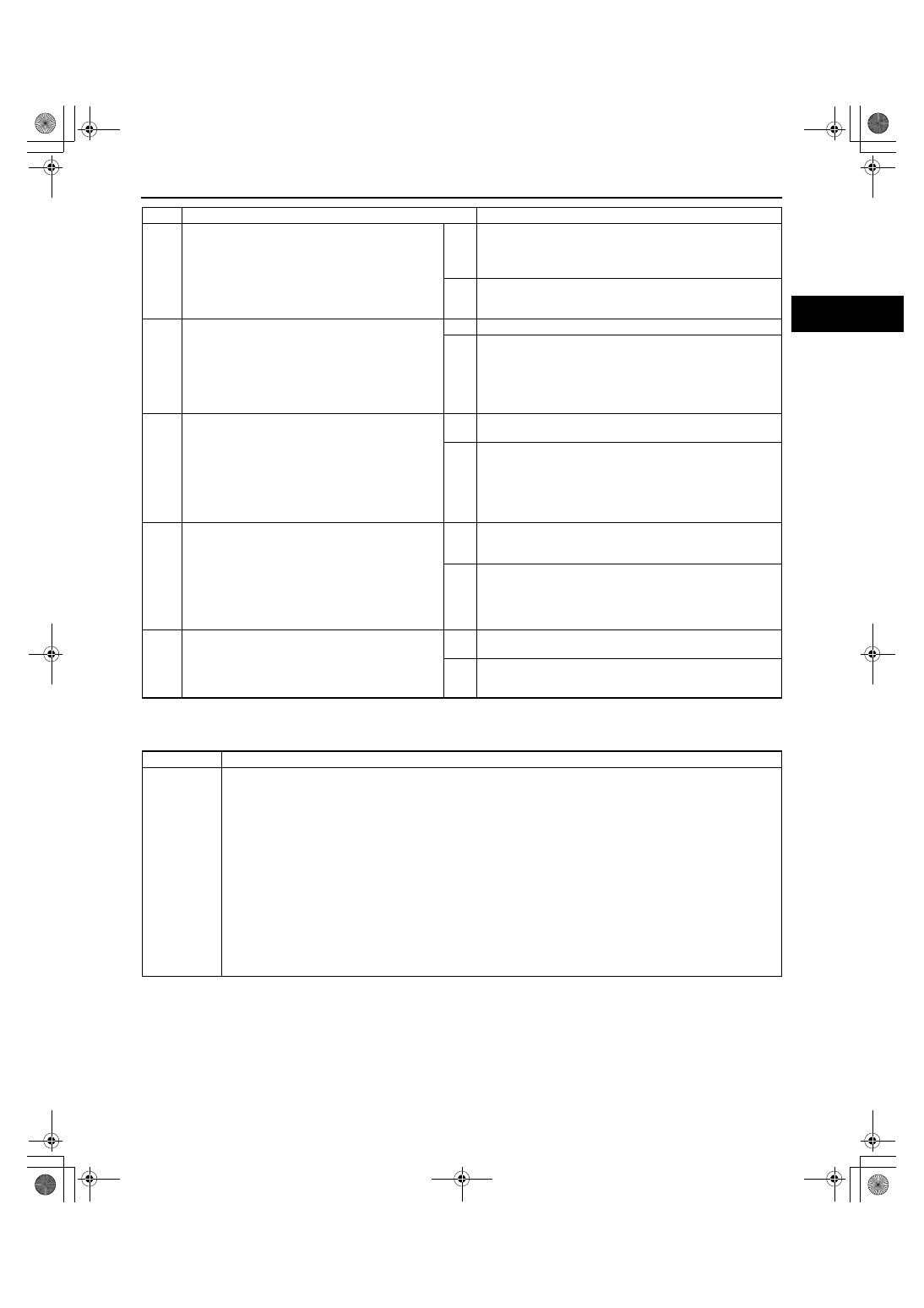Mazda CX 7. Manual - part 40

ON-BOARD DIAGNOSTIC [L3 WITH TC]
01-02–115
01-02
End Of Sie
WM: DTC P03XX
DTC P0300[L3 WITH TC]
id010239806500
4
INSPECT WASTEGATE CONTROL SOLENOID
VALVE
• Inspect the wastegate control solenoid valve.
(See01-13-14 WASTEGATE CONTROL
SOLENOID VALVE INSPECTION[L3 WITH
TC].)
• Is there any malfunction?
Yes
Replace the wastegate control solenoid valve, then go to
Step 7.
(See01-13-5 INTAKE AIR SYSTEM REMOVAL/
INSTALLATION[L3 WITH TC].)
No
Go to the next step.
5
INSPECT PCM CONNECTOR FOR POOR
CONNECTION
• Turn the ignition switch off.
• Disconnect the PCM connector.
• Inspect for poor connection (such as damaged/
pulled-out pins, corrosion).
• Is there any malfunction?
Yes
Repair or replace the terminal, then go to Step 7.
No
Go to the next step.
6
INSPECT WASTEGATE CONTROL SOLENOID
VALVE CONTROL CIRCUIT FOR SHORT TO
POWER SUPPLY
• Turn the ignition switch to the ON position.
• Inspect for continuity between the wastegate
control solenoid valve terminal B (wiring
harness-side) and body ground.
• Is the voltage B+?
Yes
Repair or replace the wiring harness for a possible short to
power supply, then go to the next step.
No
Go to the next step.
7
VERIFY TROUBLESHOOTING OF DTC P0246
COMPLETED
• Make sure to reconnect all disconnected
connectors.
• Clear the DTC from the PCM memory using
the M-MDS.
• Start the engine.
• Is the same DTC present?
Yes
Replace the PCM, then go to the next step.
(See01-40-6 PCM REMOVAL/INSTALLATION[L3 WITH
TC].)
No
Go to the next step.
8
VERIFY AFTER REPAIR PROCEDURE
• Perform the “AFTER REPAIR PROCEDURE”.
(See01-02-10 AFTER REPAIR
PROCEDURE[L3 WITH TC].)
• Are any DTCs present?
Yes
Go to the applicable DTC troubleshooting.
(See01-02-13 DTC TABLE[L3 WITH TC].)
No
DTC troubleshooting completed.
STEP
INSPECTION
ACTION
DTC P0300
Random misfire detected
DETECTION
CONDITION
• The PCM monitors the CKP sensor input signal interval time. The PCM calculates the change of interval
time for each cylinder. If the change of interval time exceeds the preprogrammed criteria, the PCM detects
a misfire in the corresponding cylinder. While the engine is running, the PCM counts the number of misfires
that occurred at 200 crankshaft revolutions and 1,000 crankshaft revolutions and calculates a misfire
ratio for each crankshaft revolution. If the ratio exceeds the preprogrammed criteria, the PCM determines
that a misfire, which can damage the catalytic converter or affect emission performance, has occurred.
Diagnostic support note
• This is a continuous monitor (Misfire).
• The MIL illuminates if the PCM detects a misfire which affects emission performance in two consecutive
drive cycles or in one drive cycle while the DTC for the same malfunction has been stored in the PCM.
• The MIL flashes if the PCM detects a misfire which can damage the catalytic converter during the first drive
cycle.
• PENDING CODE is available if the PCM detects a misfire which affects emission performance during the
first drive cycle.
• FREEZE FRAME DATA is available.
• DTC is stored in the PCM memory.
1871-1U-06B(01-02).fm 115 ページ 2006年3月15日 水曜日 午前10時32分